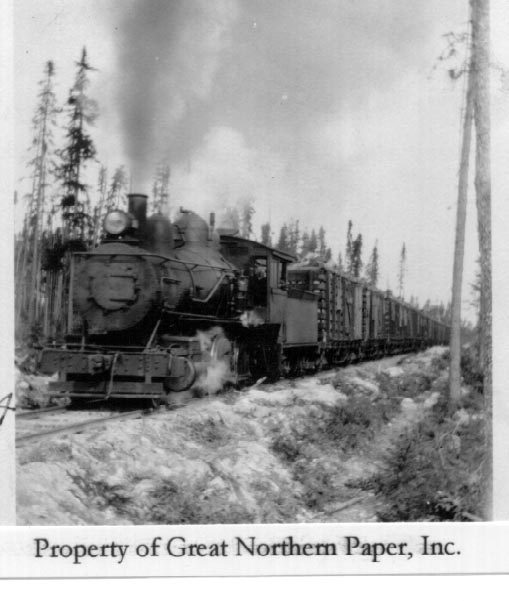Edouard “King” Lacroix Was a Canadian Lumber Baron

Edouard “King” Lacroix, a Canadian lumber baron, who had huge operations in the Allagash Region- left a legacy that remains in the heart of the Allagash Wilderness Waterway (AWW). He was born to humble beginnings, in Sainte-Marie, Quebec in 1889. He had little schooling, but did attend college for six months at Xavier University in Nova Scotia, where he polished his English skills. He started work at age 14, as a wagon boy for the Quebec Central Railroad and later as a telegraph operator for the railroad.
Lacroix built a road from Lac Frontiere, Quebec to Churchill Depot, which included the construction of Nine Mile Bridge over the St. John River. This road provided a supply route to keep his woods operations running at Clayton Lake, Churchill, the Tramway and many smaller camps. At one time, he employed over 3,500 men a year to work in his Maine lumbering operations.
Lacroix rebuilt Churchill Dam which included the installation of a dynamo that provided electricity to the small village at Churchill. He built a massive 700-foot long timber crib dam at the outlet of Long Lake on the Allagash. This dam held back a seventeen-foot head of water, this stored water is credited with adding several days to the log drives on the Allagash/St. John Rivers.
The remnants of Long Lake Dam are still visible to canoeists as they paddle or line over the small drop at the outlet of Harvey Pond. The Lacroix era storehouse and boarding house are all that remain of the “hey days” at Churchill Depot. The storehouse is in very good condition, one end is used as the History Center for the Waterway. Across the river from the storehouse sits the boarding house, once used to feed and house woods workers as they supported Lacroix’s vast lumbering operations in the Allagash Region.
His defining project in the Allagash was the construction of the Eagle Lake and West Branch railroad. The railroad was the solution to a watershed problem. Thousands of cords of pulpwood were required to keep the Great Northern Paper Company mills in Millinocket and East Millinocket running. There was a vast quantity of pulpwood within easy hauling distance of Churchill and Eagle Lakes, but these lakes flowed north to the St. John River. The pulpwood was needed to the south, at the mills on the West Branch of the Penobscot River.
Necessity being the mother of invention, the idea of building a railroad in the middle of the Maine woods was born.
During the winter of 1926–1927, the trains were partially disassembled at Lac Frontiere, Quebec and hauled over ice roads with Lombard log haulers to Churchill Depot. From there, they were hauled across frozen Churchill and Eagle Lakes to the tramway area. Transportation of the materials to build and operate a railroad in such a remote location was a monumental task. In addition to the two 100-ton locomotives, this massive project required materials to build the 1,500-foot trestle over Allagash Stream, steel rails, loaders, two gasoline powered Plymouth switchers, and forty train cars, all hauled to the tramway that winter.
Great Northern Paper Company bought the railroad from Lacroix before it was put into operation. On June 1, 1927, the train made its first successful trip over the thirteen-mile railroad. The Eagle Lake and West Branch Railroad was in business!
Great Northern Paper extended the line five miles to Chesuncook Lake at a later date, to facilitate the large amount of supplies and fuel that were required to operate the railroad.
Demand for paper declined during the Great Depression, essentially shutting down the railroad after it had carried nearly one million cords of pulpwood. The locomotives were parked in the shed at the tramway, never to be moved again.
The trains and tramway were placed on the National Register of Historic Places in 1979. Today, they are a must-see location for history buffs and canoeists paddling the 92-mile long Allagash Wilderness Waterway.
Waterway Notes: The new outlet structure at Lock Dam will be flowing much more water this winter than in previous years. The ice may not be as safe in front of the dam and where Martin Stream enters Eagle Lake. Ice fishermen and snowmobilers should use extreme caution in these areas.
Matthew LaRoche is Superintendent of the Allagash Wilderness Waterway.
